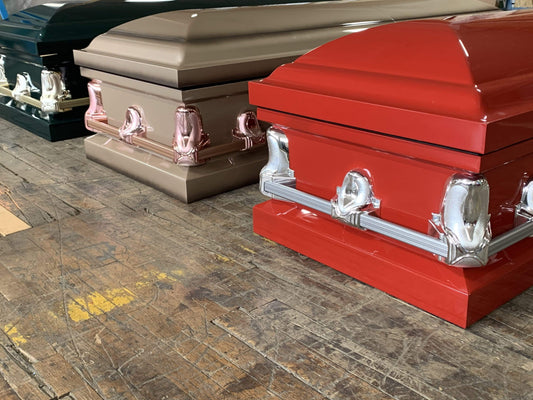The Catholic funeral has multiple stations, customs and traditions that each have their own purpose. It is a solemn day. However, it involves the coming together of the family and well-wishers of the deceased, to honor the loved one’s soul. If this is your first time attending such a service, here is what you might anticipate from the service mass and traditions on this day.
There are three key components to the Catholic funeral: the vigil service, which is popularly called a wake, followed by a funeral mass and finally - a burial service.
The Wake, the Funeral Mass and the Grave Committal
The wake or vigil service is usually conducted at a funeral home. It is a time to reconcile with the deceased and their loved ones. The rosary, a collection of prayers, is then recited to pay respect to the family of the decedent. A Priest leads the vigil service, offering prayers and readings from religious texts. Eulogies are also read during the vigil. Finally, the casket is laid at the funeral home. Whether the casket is left open or kept close is a decision of the family of the deceased.
The Catholic funeral Mass is held in the decedent’s neighborhood church, which is dictated by Canonical law. This will likely be the same church the decedent received religious rites during their lifetime. It was once a tradition to conduct the service soon after a person's passing. Today, there is greater leniency here.
The Priest blesses the casket, after which a pall is draped onto it. The pall is symbolic of your loved one’s baptism. Following this, all attendees must proceed to the altar for readings, prayers and Holy Communion. The closed casket is brought into the church by family members and close friends as pallbearers. The Priest then chooses appropriate readings from religious scriptures.
Following the mass, attendees must gather for the committal, besides the open grave— thereby committing the body to its place of resting. The procession to the grave often requires police assistance. However, there is no such formal escort required. The attendees simply meet at the cemetery at a decided time. During the Rites of Committal, the Priest says a final prayer before the casket is lowered to the ground. If the decedent wished to be cremated, the committal takes place later— on another day. The cremation happens after since the Catholic Faith requires the decedent’s body to be present during the mass for a chance of resurrection. Catholics allow cremation but require the remains to be buried just as with a casket.
Catholic Prayers and Hymns
Catholic prayers, songs, hymns as well as readings are essential components of the funeral experience. They are sung or recited as a way of reminding mourners of Jesus Christ’s resurrection— the suffering in death takes you to heaven. This celebration incites hope and also offers a kind of consolation.
Formalities at a funeral
As a first-timer, you must be made aware of certain etiquettes followed at Catholic Funerals. Since the occasion is a somber one, you must maintain a demeanor that draws little attention. At the wake, make sure to offer your condolences to the deceased’s family before making your way inside. You must not speak during the Mass. Maintain a composed bearing and proceed with the commands of the Priest. When the Mass is over, make sure to arrive at the Grave Committal in due time. The traditional mourners wear dark colors. This kind of attire usually consists of formalwear, be it pants, a shirt or a dress. The general air of a funeral is one that is serious and hence offers time to ponder ideas of life and death as they pray to God. When it comes to presenting the appropriate gift, you could consider a sympathy card or a bouquet of flowers. If you are looking to do something meaningful for the grieving family, covering a part of the funeral expense is most appropriate. In some cases, the family of the decedent may suggest alternate donation places that they might find more acceptable, meaningful or useful.

![Upgrade to Premium Weight [18-gauge steel]](http://titancasket.com/cdn/shop/products/casketthicknesswithnumbers.png?v=1680642906&width=533)



